Coroutines: What are they? How do they work?
I am super excited for today’s article because we are going to dive into one of my favorite topics in Unity: Coroutines! In this article, we won’t go too in depth as I want to keep this consumable for beginners, but I will very likely dive deeper into Coroutines and how they work under the hood in a future article because I just find them so fun!
We’ll use Coroutines to spawn our enemies infinitely in our game!

First, lets create a new GameObject that we’ll call Spawn_Manager and create a new script for it called SpawnManager. Be sure to add the newly created component to your Spawn_Manager game object:
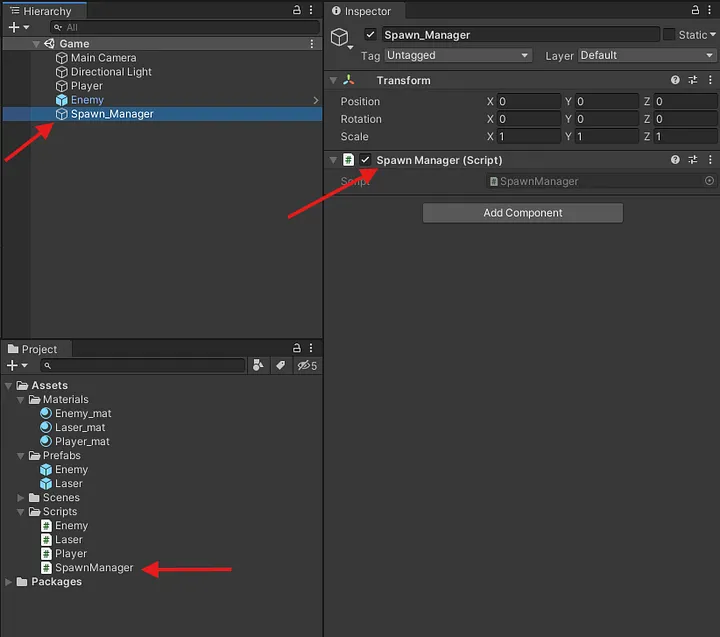
Before we get into code, I want to explain a couple of basic concepts here. First of all, what is a Coroutine?
Coroutine
A Coroutine is essentially a block of code that gets run over multiple frames in your game. Traditionally when you write code, it will run from top to bottom until it is finished executing and any other code after it will have to wait until it’s finished. Often times, we want code to run over the course of, say, a few seconds before we make something happen while also letting the next block of code run like normal. We achieve this by using Coroutines in Unity.
Let’s go to our SpawnManager script and I’ll show you what a basic Coroutine looks like:
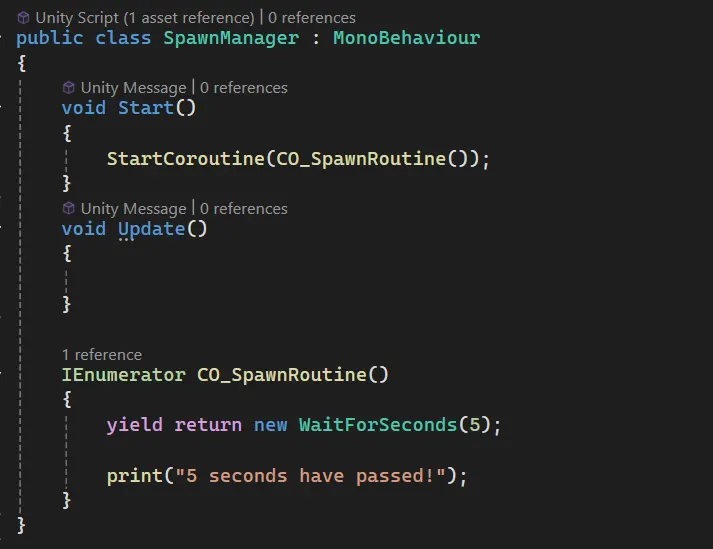
So we have a method that we are calling CO_SpawnRoutine(), eventually we’ll use this method to spawn our enemies at a specific interval. Something to note is that I like to prefix my coroutines with CO_to denote that it’s a Coroutine. You’ll notice a few things about this special-looking method.
The first thing is this weird IEnumerator that we are adding to our method signature instead of void which we are used to. What this basically means is that our method returns an object of type IEnumerator but for our purposes and to keep things simple, assume that methods with IEnumerator as their return types are Coroutines. We need that so that Unity knows we want to use a Coroutine.
The next weird thing is this yield return line. The yield keyword is a C# keyword that you must use whenever you are writing a method that returns an IEnumerator. This tells the compiler to let code run after this method is called once it hits the yield part of the method’s execution. Its a little tricky to understand, so I wouldn’t let yourself get too caught up with it. For now, just know that the yield return new WaitForSeconds(5); line does just what you’d expect. It waits 5 seconds before going on to the next line which is our print statement that says “5 seconds have passed!”.
Finally in our Start method, we have the StartCoroutine() method, and in it we pass in our coroutine method. In Unity, you have to tell the engine when you want to run a Coroutine. In this case, we will run it at the start of the game. If we run this then “5 seconds have passed!” will get printed in the console after 5 seconds:
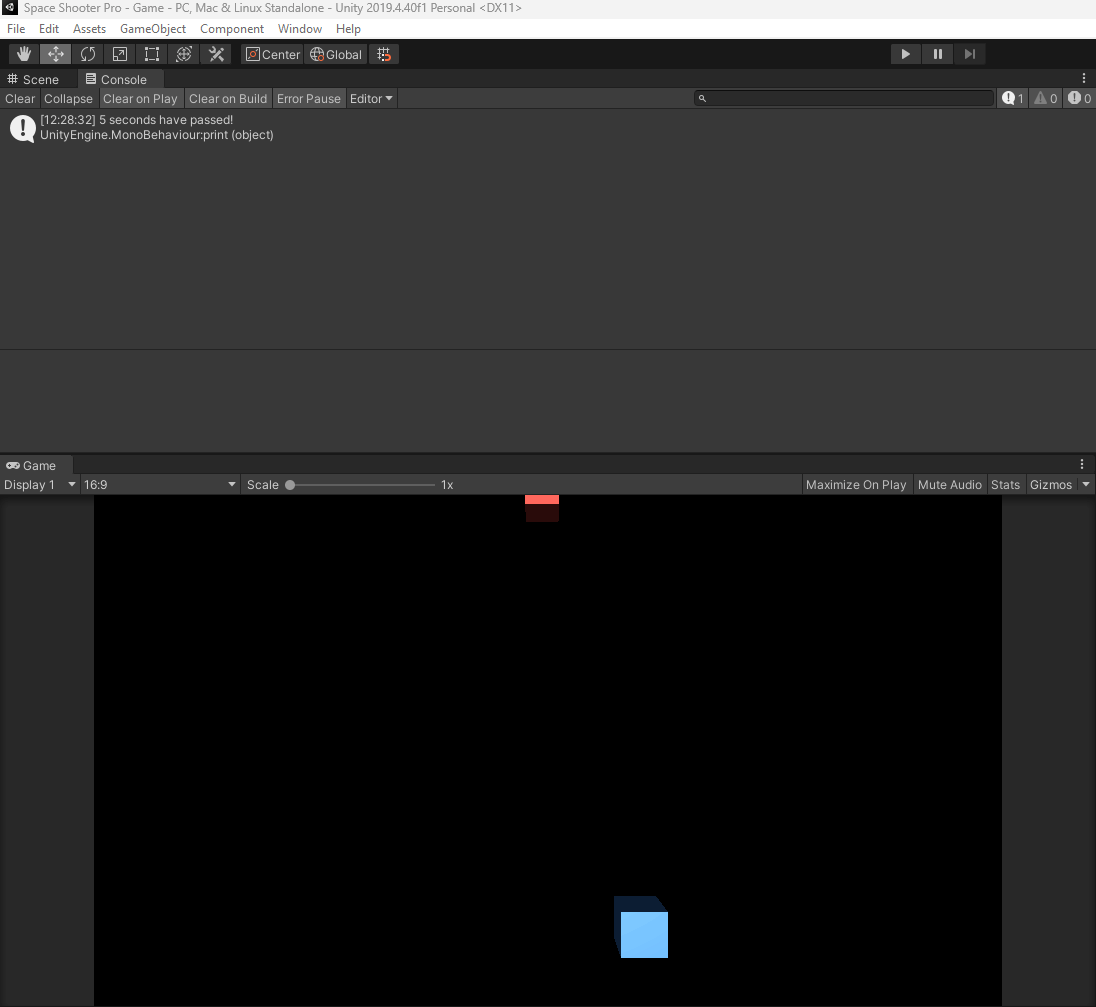
Go ahead and give this a try on your project. Make sure that it works!
Now this is useful because we can use something like this to spawn enemies every 5 seconds in our game (or maybe every 3 seconds, or every 10 seconds). I’ll show you how to do this very simply.
Firstly I want a prefab in our SpawnManager script so that we can Instantiate the prefab as many times as we want within this script!
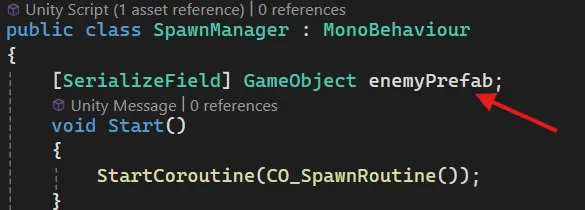
Make sure to drag and drop the prefab into the SpawnManager’s inspector panel:

And now let’s write the logic we’ll need to spawn enemies infinitely:
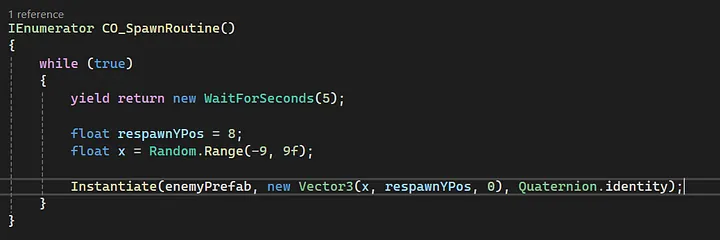
Once we have that done, we just write logic to Instantiate the enemyPrefab after 5 seconds that we wait in yield return new WaitForSeconds(5);. With that, we have a working SpawnManager in our game!

There we go! We have a working Coroutine in our game! At some point, I’d like to dive deeper into coroutines as I did omit some details in the interest of keeping things simple for beginners. Coroutines are a bit more of an advanced topic, but they are so useful even for beginners I feel the need to explain at least the basic use case for them. At some point, I’ll dive deeper into this cool Unity feature in another article! Stay tuned for that! Good luck!
If you'd like to get into the details of how Coroutines work take a look at my Coroutines Deep Dive! article!